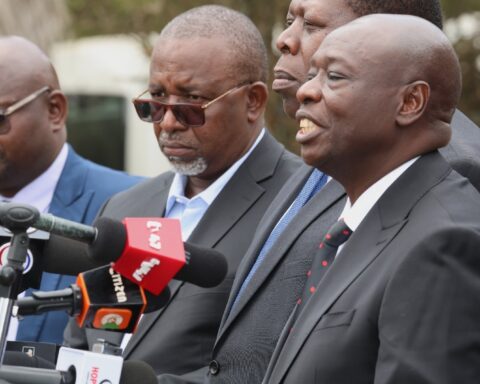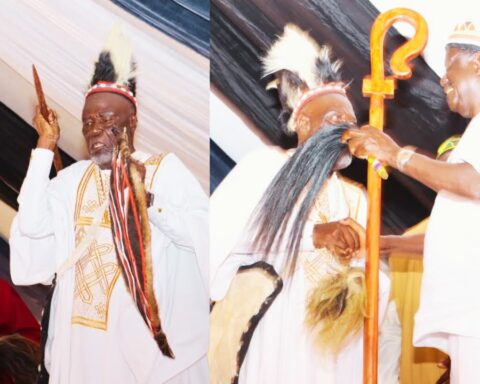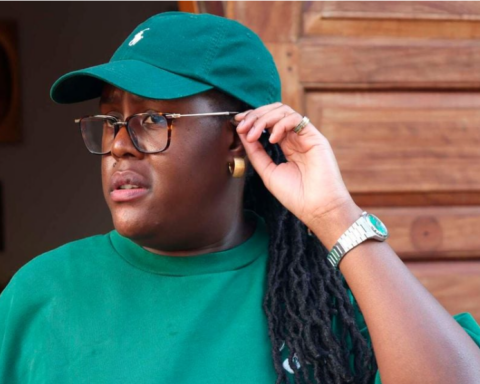There is a communal conversation happening among the Luo on how to relate with the government of President Ruto and the President himself.
This conversation is happening in the backdrop of a waning Raila Odinga on account of the vagaries of age and vicissitudes of power; and the gathering of a new national opposition without Luos as the ‘critical mass’ and Odinga himself as the ‘thunderbolt’ of these anti-regime forces.
The Luo response to President Ruto’s ascension to power in 2022 was mostly muted even as the ODM Party and Raila Odinga took his disappointed supporters back to the streets to protest against the new regime in early 2023.
Raila’s protests were on varied national issues which were not necessarily Luo issues.
The Luo however quickly fell in line and Luo youths bore the heaviest brunt of the protests, with many injured and dead.
The Azimio protests were lurched on the high cost of living on account of the new tax measures the new government was implementing.
The opposition to taxation was however a bogey for something else – Odinga still pursued the legality of the presidential election results which had declared Ruto the winner.
Even though there had been a petition to the Supreme Court which had upheld Ruto’s victory, shutting doors on further juridical challenges, Odinga took the war to the streets, where it turned bloody.
Raila’s opposition to the new Ruto regime had not been warmly received by the Luo.
There was manifest fatigue.
Whereas the loss was hurtful, the community failed to understand how it had happened at a time it had been assured by none other than the incumbent President, Uhuru Kenyatta, that Baba would be ‘the 5th’.
Historically, it had been the case that the biggest bottleneck to Raila capturing presidential power was the ‘deep state’ and the ‘system’ which had now been won over courtesy of the Raila-Uhuru handshake.
This was also the election where the Raila-Uhuru axis had stuffed IEBC with their loyalists who would later be known as the ‘Cherera Four’.
At the IEBC secretariat, two Luo names had featured prominently: the ICT Manager and the Legal Manager, creating the impression that Baba had ‘blood insiders’ there too.
‘Baba the 5th’ was a forgone conclusion.
Luos were telling each other to ‘twang’ sut’ – that is, ‘tailor your suit’, in readiness for Baba’s swearing in. That entire enterprise turned out to be a ‘worthless pursuit’.
The failure of the handshake to deliver the presidency dented Raila’s claims of perennial foul play and vote rigging.
He had enough henchmen and henchwomen to ‘stop the steal’.
There was simply no major culprit to blame for the fifth electoral loss.
Matters were not helped by Raila’s coterie of usual suck-ups whom he had entrusted with Voting Day management and who had once again failed spectacularly to protect his votes or even collect evidence of rigging.
Nobody, including his chief agent, who turned out to be the most clueless, could tell how many votes Raila had bagged.
For the first time, Raila Odinga had no evidence to prove a prima facie case of rigging in the court of public opinion.
At the Supreme Court, he presented the weakest case which the top bench easily dismissed as ‘hot air’ and ‘wild goose chase’.
Ruto on the other hand had quickly settled in power following a peaceful handover by Uhuru Kenyatta, the same sloshed Uhuru who had given a public commitment to never give power to a ‘thief’; and had thus been expected to hand over power to Mr. Odinga by any means necessary.
The conclusion by the Luo community was that Uhuru had conned the old man. The four years of post-handshake loyal support he had been accorded were now wasted years.
The Luo accepted their condemned fate and adjusted accordingly, in the back row.
The new government that President Ruto formed was largely reflective of the Kalenjin-Kikuyu power matrix that had dominated the previous ten years of Uhuru Kenyatta.
However, there were two politically anomalous appointments which sent shockwaves across the country – the promotion of the then Vice Chief of the Defence Forces Lt. Gen. Francis Ogolla to a full general and his subsequent appointment as the Chief of Defence Forces, and the appointment of Dr. Raymond Omollo as the Principal Secretary for Interior, the very position the exiting Dr. Karanja Kibicho had fettered with imperial prerogatives.
Unlike Dr. Raymond Omollo who was until then a little-known mid-level civil servant managing a backwater parastatal with a measly budget, Gen. Ogola had been thrust in the deep end of transition politics having been part of senior government officials who’d been to Bomas of Kenya to allegedly doctor the presidential results and deny Ruto his victory.
Few knew the organizational ability of Dr. Omollo.
In ODM circles, he was seen as a novice with no capacity to preside over the behemoth that is Kenya’s provincial administration.
That was because the ODM higher-ups had not paid attention to how UDA managed to penetrate Luo Nyanza and ward off any potential vote rigging — vote rigging which had not even been planned!
Since independence, no Luo had helmed Kenya’s military. The Kenyatta-Jaramogi fallout in the 1960s had stunted the military progress of many Luo military men.
This was followed by the 1982 incident which had all but destroyed any hope of a Luo ascension as ethnicity became a key consideration in filling up senior echelons of power in Kenya.
Ruto disrupted this dubious historical power arrangement, pivoted to competence and meritocracy, annoying the avowed tribalists in his camp.
Unknown to many, Ogolla was very unpopular in the ODM/Luo circles. He had become the ‘last line of defence’ to grab power at Bomas but had chickened, allowing Chebukati to cheaply give Ruto power!
Yet, Ogolla himself had been set up in what would later emerge as an elaborate con-game to deny him the military top seat.
With Raila now defeated and Ogolla enmeshed in the Bomas fiasco, the Luo faced a double jeopardy.
By President Ruto’s own account, once he took charge and summoned Ogolla over the ‘Bomas issue’, the career military officer justifiably explained the circumstances which made him visit Bomas as having been an order from his superiors – the then CDF Gen. Robert Kariuki Kibochi and the C-in-C himself, Uhuru Kenyatta.
He left his fate with the new president and now also the Commander-in-Chief.
According to Ruto, Ogolla urged him to either retire him out of the goodness of his heart, or court-martial him.
It was Ruto’s decision to promote him to a full general and appoint him as Chief of the Defence Forces, much to the chagrin of his fuming backers, that surprised many.
The Luo took note.
Still in the early days of Ruto’s new rule, the President also did something none of his recent predecessors had done. Ruto made several trips to Luo Nyanza, initially hosted by ODM elected leaders who had ‘rebelled’ against the ODM Party position of ‘non-engagement’ and had chosen to work with his regime.
With time, he also now benefitted from the forced hospitality of mainstream ODM politicians – James Orengo in Siaya, Gladys Wanga in Homa Bay and Anyang’ Nyong’o in Kisumu.
In these early engagements, the Luo had to contend with a new President stretching a hand of cooperation at a time of Luo defeat.
If the appointment of Dr. Raymond Omollo as Principal Secretary for Interior and Francis Ogola as the Chief of Defence Forces served as an important turning point in the Luo-Ruto relations, it was his decision to embrace the entire Luo community by projecting a less antagonistic aura around his presidency that tempered Luo opposition to his regime.
By the time the country woke up to these political developments, NADCO had been formed and Odinga had emerged as Kenya’s AUC candidate, steamrolled by the Ruto state.
The totality of these early presidential actions set the stage for many of the events that would follow, including the fallout with his deputy, who grumbled that the safe buffer protecting ‘Kikuyu interests’ had been breached, eventually bolting out.
The Luo-Ruto bromance still has to contend with many things, including Odinga’s enduring presidential ambitions.
In Ruto, however, the Luo today feel secure enough to forge ahead while rebuilding its machinery for power, one that is realistic in its conception and responsive to the fierce economic urgency of a backyard reeling from decades of disempowerment and dispossession on account of a long, fruitless struggle to capture the presidency of Kenya.
Finally, Ruto has to contend with one other thing: the delicate balancing act needed to assuage Kikuyu fears over Luo hopes, or vice versa.
This is what the entire ‘Ruto Must Go’ melee is based on.
There’s nothing like Gen Z.
That’s just a ‘youth wing’ of one of the above protagonists.
Kenya’s success will depend on President Ruto achieving this balance, without which there’s scarcely any hope for Kenya.









